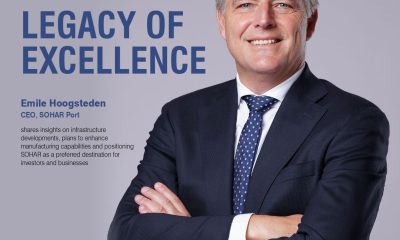UAE
Emirati researcher creates new web tool to facilitate first-ever Twitter analysis on COVID-19 in UAE

(WAM) — An Emirati faculty member at Khalifa University of Science and Technology has created a new web tool for analysis of COVID-19 Twitter data in the UAE, offering the public insights into conversations, emotions and sentiments concerning the virus.
The tool titled ‘Analysis of Cross-linguistic markers of COVID-19 Tweets in the UAE’ shows that public sentiment remained positive and trustful of government actions towards mitigating the spread of the disease, reflecting the UAE’s effective measures against COVID-19.
The web tool developed by Dr. Aamna Mohammed Al Shehhi, Assistant Professor, Electrical Engineering and Computer Science, facilitated understanding of social impacts of COVID-19 by creating a Twitter dashboard that offers an insight into public social media conversations.
Analysing linguistic markers in social media posts helps in assessing and evaluating changes in the narrative about COVID-19, while understanding the social and emotional reaction to different government actions.
Led by Dr. Al Shehhi, the project to develop the web tool for Twitter analysis in the UAE, was also supported by the Emirates ICT Innovation Centre, EBTIC, which is supported by Etisalat, BT, Khalifa University, and the UAE ICT Fund.
Dr. Al Shehhi said this Twitter analysis indicates the ever-increasing role of social media and its impact on policy-making.
She added, “Such understanding enables large-scale opportunities for information-seeking, and practice-sharing to calm people down, and understanding of the differences in the COVID-19 narrative delivered across languages. It also provides a tool to measure the COVID-19 impact on social well-being. Integrating Twitter dashboard analysis therefore can help policymakers during the decision-making process.”
The study assessed tweets both in English and Arabic during the observation period, which spanned from 1st January to 1st May, 2020. The predominant topic of tweets ranged from the origin of the disease, the disease’s spread, government responses, and treatment, in addition to common themes of daily tweets.
The data shows that in early January, at the beginning of the observation period, panic behavior was noticed in both Arabic and English tweets on COVID-19, during which time fear topics such as virus, death, epidemic, and pneumonia were common content. However, since January-end, there was a greater spread of positive and hopeful sentiment, which increased over time.
This increase in positivity is attributed to different government actions, such as restrictions of movement at national borders and strengthening of the healthcare system.
-

 Alamaliktistaad Magazines2 months ago
Alamaliktistaad Magazines2 months agoAlam Al Iktisaad – September 2025 Edition
-

 Magazines2 months ago
Magazines2 months agoOER – September 2025 Issue
-

 News2 months ago
News2 months agoKitchenomiKs Secures Investment of US$3.2M Led by Jasoor Ventures
-

 News2 months ago
News2 months agoOman Inaugurates ‘Hadatha’ – Its All-New Cybersecurity Center
-

 Banking & Finance2 months ago
Banking & Finance2 months agoOman Arab Bank Highlights Its Ongoing Strategic Initiatives and Future Plans
-

 News2 months ago
News2 months agoIEA Expects Global Oil Market to Remain Oversupplied in 2026
-

 Energy2 months ago
Energy2 months agoWLGA Middle East LPG Summit & Expo 2025 to be held at OCEC on November 10 and 11
-

 Real Estate2 months ago
Real Estate2 months agoAl Mouj Muscat Unveils Azura Beach Residences Phase 2: A New Chapter in Waterfront Living






























